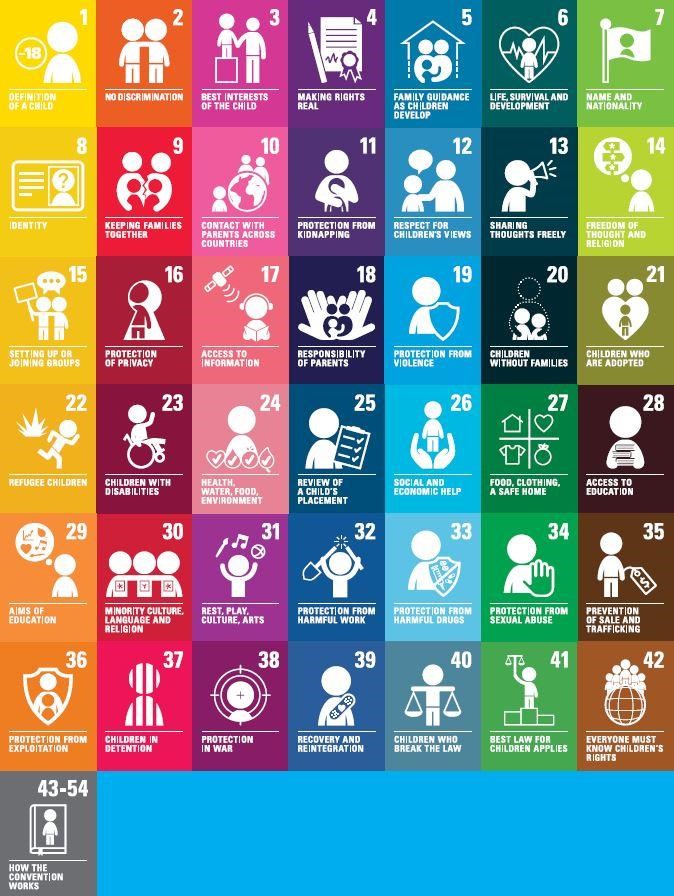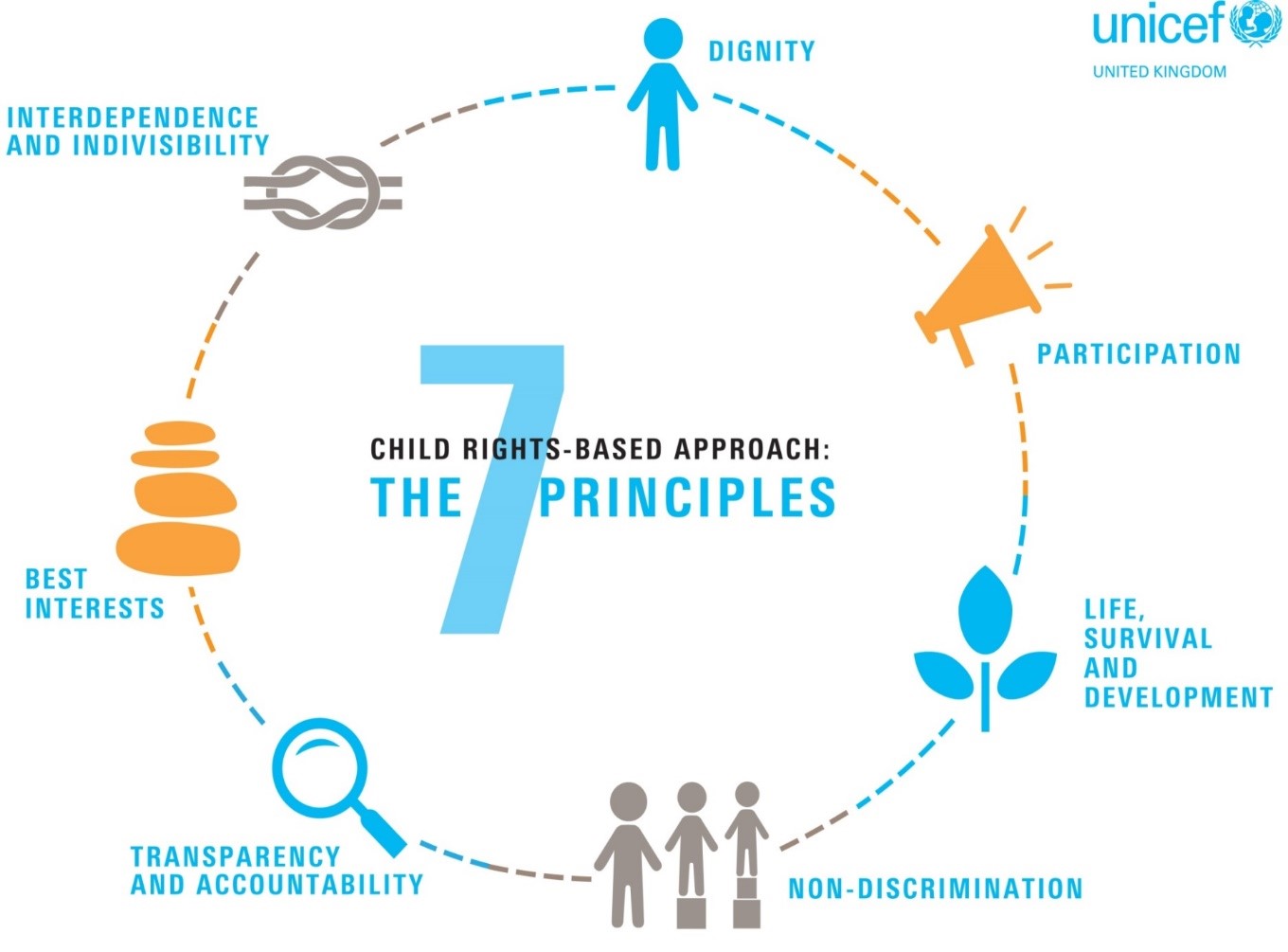UN Convention on the Rights of the Child
Children’s Rights exist to ensure the human rights of children are protected. They protect the child as a human being, and is specially adapted as it takes into account the child’s specific age-appropriate needs. In 1989, the United Nations developed a convention to ensure this became internationally legally binding.
The Convention has 54 articles that cover all aspects of a child’s life and set out the civil, political, economic, social and cultural rights that all children everywhere are entitled to. It also explains how adults and governments must work together to make sure all children can enjoy all their rights.
Please find a link here to the entire convention, however, if you would like a great summary of the convention, please find this below or here:
Child Rights-Based Approach
So how do you apply this in your work that involves children? UNICEF, the world’s leading organisation advocating children’s rights, has developed 7 core principles to allow you to adopt a child rights-based approach. Have a look at these here:
What do these mean?
- Dignity
Every child and young person, just like each adult, has inner dignity and worth that should be valued, respected and nurtured. Respecting children’s dignity means all children should be treated with care and respect in all circumstances – in schools, hospitals, police stations, public spaces or children’s homes. This principle guides how services relate to children. It concretely implies that staff should have the skills required to interact with children and ensure that children are part of the conversation.
- Interdependence and indivisibility
Rights cannot be ‘cherry-picked’ depending on circumstances. All children and young people should enjoy all of their rights all of the time because all rights are equally important. Children and young people’s rights to a good standard of living, or to be protected from abuse, neglect and violence, are just as important as their rights to get together with their peers or to freedom of expression. An understanding of the situation locally for children needs to be comprehensive and services need to work holistically. A decision concerning a child to address a right, cannot lead to a breach of other right
- Best Interests
The best interests of the child must be a top priority in all decisions and actions that affect children and young people. Decisions can relate to individual children, for example about adoption, or groups of children and young people, for instance when designing play spaces. In all cases, children and young people should be involved in deciding what is best for them. This element implies weighing different factors and taking into consideration the child’s views. It also applies to policy-making at the local level
- Participation
All children and young people have the right to have a say in matters that affect them and to have their views taken seriously. In order to participate meaningfully in the lives of their family, community and the wider society, children and young people need support and opportunities for involvement. They need information, a space to express their views and feelings, and opportunities to ask questions. Duty bearers should ensure that children receive relevant information, can associate with others, and can freely express their views, as a continuous process. Barriers to participation need to be identified and addressed.
- Non-discrimination
Every child and young person should be treated fairly and protected from discrimination, whatever their age, gender, ethnicity, religion, language, family background or any other status. Having access to equal opportunities and best possible outcomes doesn’t mean being treated identically; some children and young people need more support than others to overcome barriers and difficulties. This principle implies that duty bearers are aware of the multiple barriers that may prevent children and families from accessing services and lead to inequitable outcomes, as well as some children’s need for special assistance to enjoy their rights.
- Transparency and accountability
Open dialogue and strong relationships between children and young people, professionals and local politicians are key to making rights a reality. For this to happen, everyone needs to be supported to learn about and understand rights. Knowledge of rights also allows children and young people to hold to account the people responsible for ensuring their rights are protected and realised. Making children and families aware of their rights, making information openly available, setting up social accountability mechanisms, and ensuring access to a remedy for rights holders are essential components.
- Life, survival and development
Every child has a right to life and each child and young person should enjoy the same opportunities to be safe, healthy, grow and develop. From birth to adulthood, children and young people develop in many different ways – physically, emotionally, socially, spiritually and educationally – and different professionals should work together to help make this happen. A multiplicity of interventions are involved in the realisation of this right, making cross-sectoral coordination and oversight mechanisms paramount.

